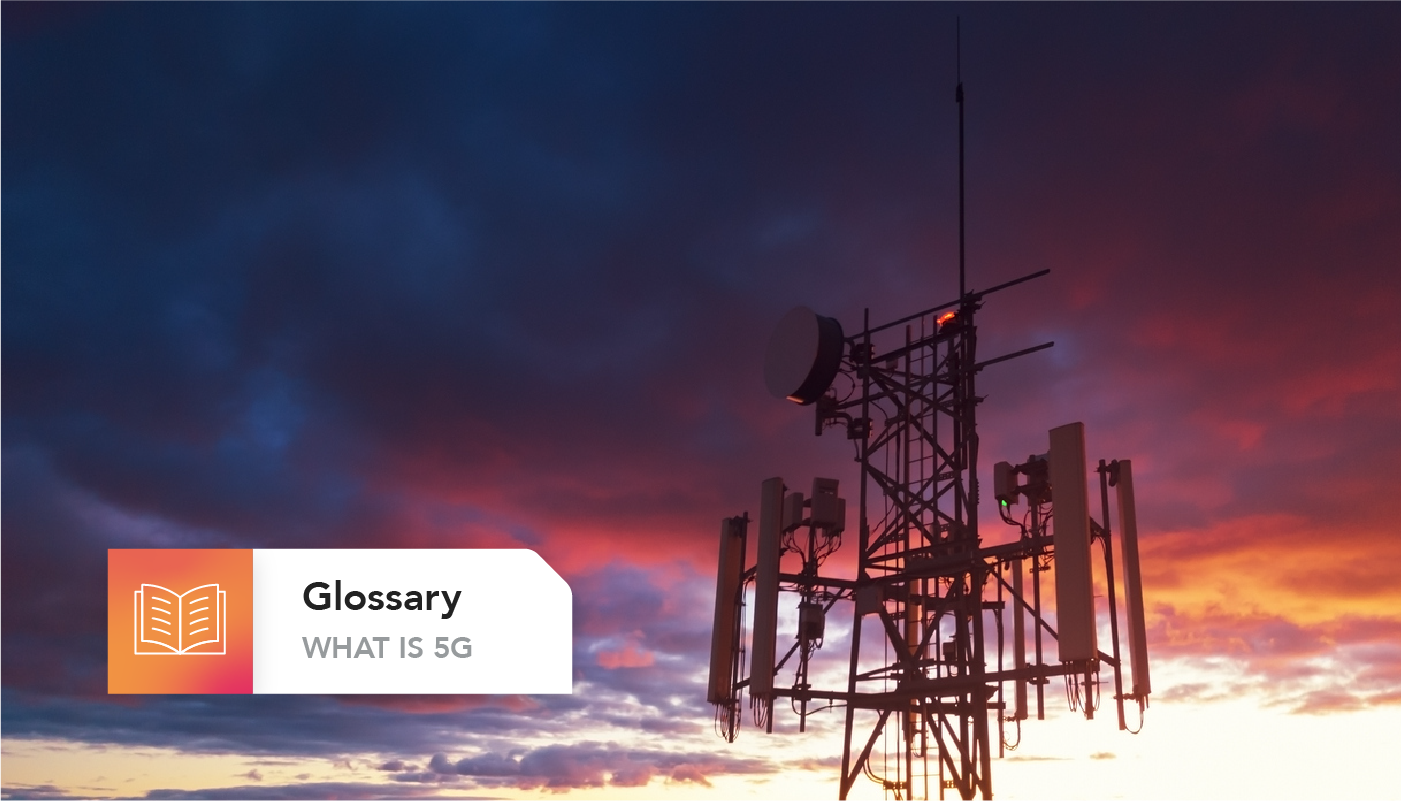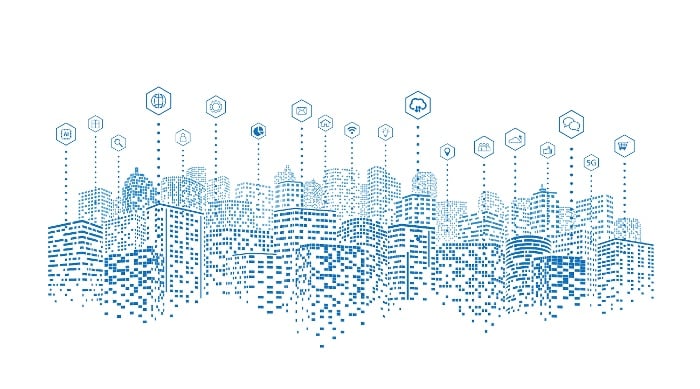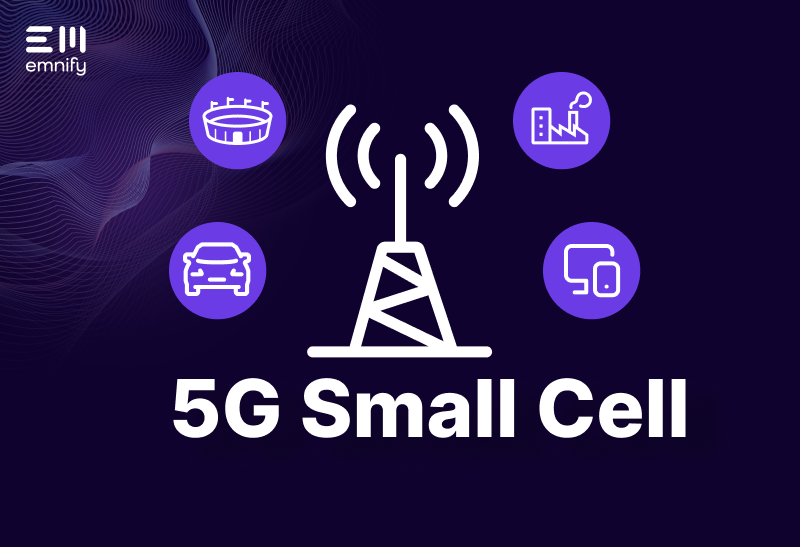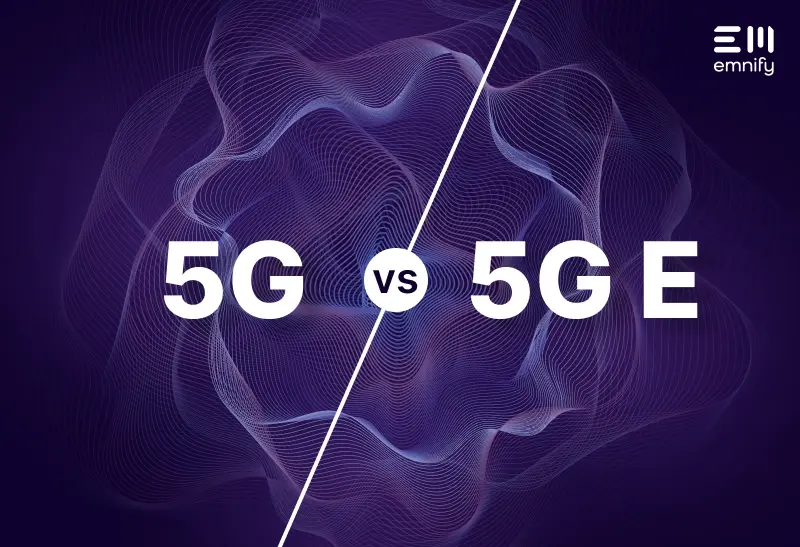

Quick definition: 5G IoT leverages the fifth generation of cellular networks to connect larger concentrations of devices with significantly faster data speeds and lower latency. There are three distinct types of 5G networks, and each has IoT applications. These advanced standards introduce several technologies that allow carriers and MNOs to leverage greater bandwidth and provide better, more versatile connectivity.
5G networks are vastly improving high-speed Internet connectivity around the globe and opening the door to a revolution in the Internet of Things (IoT). There are already billions of IoT devices, but the wider bandwidth and more efficient spectrum usage of 5G networks will allow far more devices to operate in close proximity without interfering with one another.
It will be years before 5G reaches its full potential, and 4G LTE networks will still be viable for a long time (on this check our article where we explain the difference between 4G and 5G). But for IoT manufacturers and consumers alike, it’s helpful to understand what makes this technology different and how we can expect it to shape the landscape of cellular connectivity moving forward.
How fast is 5G?
5G networks are designed to achieve a peak download speed of 20 Gbps and peak upload speed of 10 Gbps. The average rates are more like 100 Mbps for downloads and 50 Mbps for uploads.
For comparison, the maximum theoretical data speeds for 4G LTE are 150 Mbps for downloads and 50 Mbps for uploads, with an average download speed of 20 Mbps and an average upload speed of 10 Mbps.
In other words, 5G’s average data speed is five times faster than 4G, and in theory, it could reach speeds more than 100 times faster.
But 5G doesn’t just boast faster downlink and uplink speeds. It also has much lower latency as well. Latency is the time it takes to relay requests and responses from one device to another through a network. In a 5G network, the average latency is four milliseconds, and it can be as low as one millisecond for some applications. With a 4G connection, latency is closer to 50 milliseconds—making 5G’s latency more than 10 times lower than 4G.
Consumers can download full-length movies in high definition in seconds. And advanced IoT applications like self-driving cars, smart farming equipment, and remote healthcare will rely on 5Gs low latency and greater bandwidth.
In the past, faster speeds have come hand-in-hand with greater power consumption, but 5G builds on the power saving features of 4G to offer higher data throughput and lower power usage.
What’s the bandwidth of 5G?
Speed isn’t the only advantage of 5G networks. 5G technology offers significantly wider bandwidth and greater flexibility in regard to how bands get used. This means 5G networks can maintain stable connectivity for a far greater number of devices in a concentrated area. And it’s the primary way 5G is changing the Internet of Things.
Every network operates within specific frequency bands, and the devices on that network have to share that bandwidth. Over the years, advances in wireless technology and new approaches to connectivity have allowed providers to do more with the bandwidth they have. However, every network still faces the same limitation: too many devices using the same frequency bands within the same “cell” of a cellular network creates interference and disrupts connectivity.
5G networks can facilitate connectivity on low frequencies below 1 Gigahertz (GHz), mid frequencies from 1 GHz to 6 GHz, and high frequencies from 6 GHz to over 100 GHz. Additionally, a 5G network can connect devices over both licensed and unlicensed bands, giving providers greater flexibility with how they use the radio frequency spectrum.
For comparison, commercial 4G networks can only use bands between 600 MHz and 3 GHz.
While the substantially higher frequencies allow for greater data speeds, this also creates new challenges for engineers that want to take advantage of 5G.
What are the challenges of 5G?
4G has been available for more than a decade. In that time, MNOs have built up massive 4G infrastructures, and innovators have found solutions to solve 4Gs shortcomings. 5G introduced new possibilities, but some new challenges came with it as well.
Less coverage
Higher radio frequencies have shorter wavelengths. And that means they can’t travel as far. This means that the “cells” of a 5G cellular network have to be smaller if an MNO wants to provide access to those high-frequency bands. 5G networks require more infrastructure, and that infrastructure offers less coverage.
Additionally, higher frequencies have a harder time penetrating buildings, which means they have poor indoor coverage. 5G can use bands in low and mid-range frequencies as well, but indoor applications will often not be able to use the higher bands.
5G connectivity is most useful in big cities where there’s a higher concentration of cellular devices (and greater demand for high-speed, low latency Internet). But it will take time for MNOs to build up the infrastructure needed to provide widespread 5G coverage.
However, Low Power Wide Area Networks (LPWANs) like Narrowband IoT (NB-IoT) and LTE-M are beginning to incorporate 5G technologies. Massive Machine-Type Communication (mMTC) is the 5G evolution of NB-IoT and LTE-M, and it will facilitate greater 5G coverage.
IoT security risks
5G connectivity is making room for tens of billions of new connected devices and more advanced applications for cellular IoT. This massive increase in the volume and capabilities of Internet-enabled devices will continue to present IoT security challenges.
Every connected device creates opportunities for an application to serve as a gateway to an end user’s other connected devices, and botnets will likely grow in direct proportion to this increase, making them capable of inflicting even greater harm on a network through Distributed Denial-of-Service attacks. As IoT devices continue to collect and use more advanced data, the risk of unauthorized access increases as well.
This has always been a challenge with IoT, and it will be exacerbated by the continued growth in this sector, but it’s also not a challenge that’s unique to 5G connectivity. In fact, 5G networks introduce new security mechanisms that make this connectivity more secure than other network types, such as the ability to encrypt International Mobile Subscriber Identities (IMSIs), end-to-end encryption of all network traffic, and mutual authentication.
Increased costs
Generally speaking, the longer a network has been around and the less complex its underlying technology is, the more modems IoT manufacturers have to choose from, and the less those modems cost. 5G is brand-new, and you need highly advanced modems and modules to connect to 5G networks. This can greatly increase your development costs. However, 5G mMTC is specifically designed for cellular IoT and will cost substantially less than other 5G tech.
Satellite interference
5G’s ability to access higher radio frequencies has introduced a problem cellular carriers and manufacturers haven’t encountered before: they’re sharing bandwidth with satellites we use for weather forecasting. Scientists have warned that using these high-frequency bands could significantly interfere with our ability to accurately track, measure, record, and predict the weather.
Wireless carriers and the Federal Communications Commission (FCC) have countered that keeping 5G networks concentrated in urban areas and using beamforming technology will make this potential disruption insignificant.
If you wish to know more about the role satellites play in cellular IoT, read our article about Satellite IoT.
When will 5G be widely available?
Most major carriers have already deployed 5G networks, and they’ve sold millions of 5G compatible devices. But for now, 5G service is typically only available in larger cities. Some carriers already have 5G coverage in hundreds or thousands of cities, but on low frequency bands. Low-band 5G coverage will likely be widely available within a couple years, but high-speed 5G connections will take more time to roll out.
Is 5G connectivity right for your business?
5G is the future of cellular connectivity. But for IoT, widespread 5G adoption is still in the distance. While 5G includes IoT-specific features, all of the relevant solutions are already present in LPWANs like LTE-M and NB-IoT. So unless you have a use case that requires very high data throughput and ultra low latency, there are other cellular networks that might be better suited for your needs.
emnify facilitates complete end-to-end connectivity for cellular IoT manufacturers. We enable your devices to stay connected anywhere in the world, and you can use 2G, 3G, 4G, 5G, LTE-M, and NB-IoT networks.
Want to learn more about modern IoT connectivity?
Get in touch with our IoT experts
Discover how emnify can help you grow your business and talk to one of our IoT consultants today!
More than six years of experience as a senior editor in the realm of smart home, connectivity and Internet of Things. And still as curious as on the first day.


